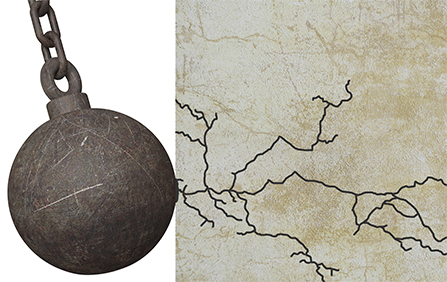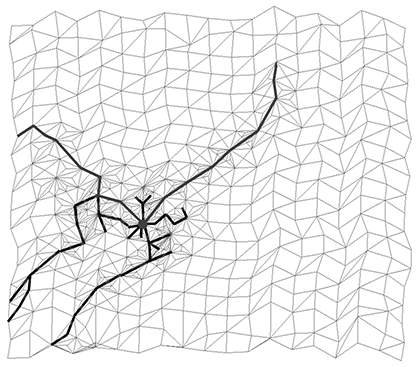One of my favorite areas of study is about how things break. Surprisingly (or not so surprisingly) physicists haven’t made very many studies on this subject–engineers and scientists are more interested in how to design things so they don’t break.
This lack of study means we animators don’t have a lot of technical information to go on. The good news is that animation researchers are very interested in this subject, and have done some excellent studies to help us understand exactly how things crack and break apart. Physics engines that include smash ‘n’ break functionality use this information as the basis for the animation.

The most important thing to know is that cracks follow the path of least resistance. Every time there’s an impact against a hard object (such as when you drop your cell phone on a hard floor) it affects the tiny cracks that every man-made object has as a natural result of the manufacturing process. The largest cracks get larger and larger on each impact until, when you drop your phone for the 23rd time, the screen cracks.
Cracks form and emanate based on the largest crack, which is often the place of impact (as with a wrecking ball) or sometimes just the place where the largest crack was during manufacture (as with a cell phone screen). One way to emulate this effect is to tessellate an object and, after determining where the largest crack is, pushing out crack lines from that point along the imagined path of least resistance.

When the cracks reach other cracks or the edge of the object, this forms the pieces of the object as it breaks.
You can learn more about keyframing breakage and fracture in Chapter 8 of Physics for Animators.
